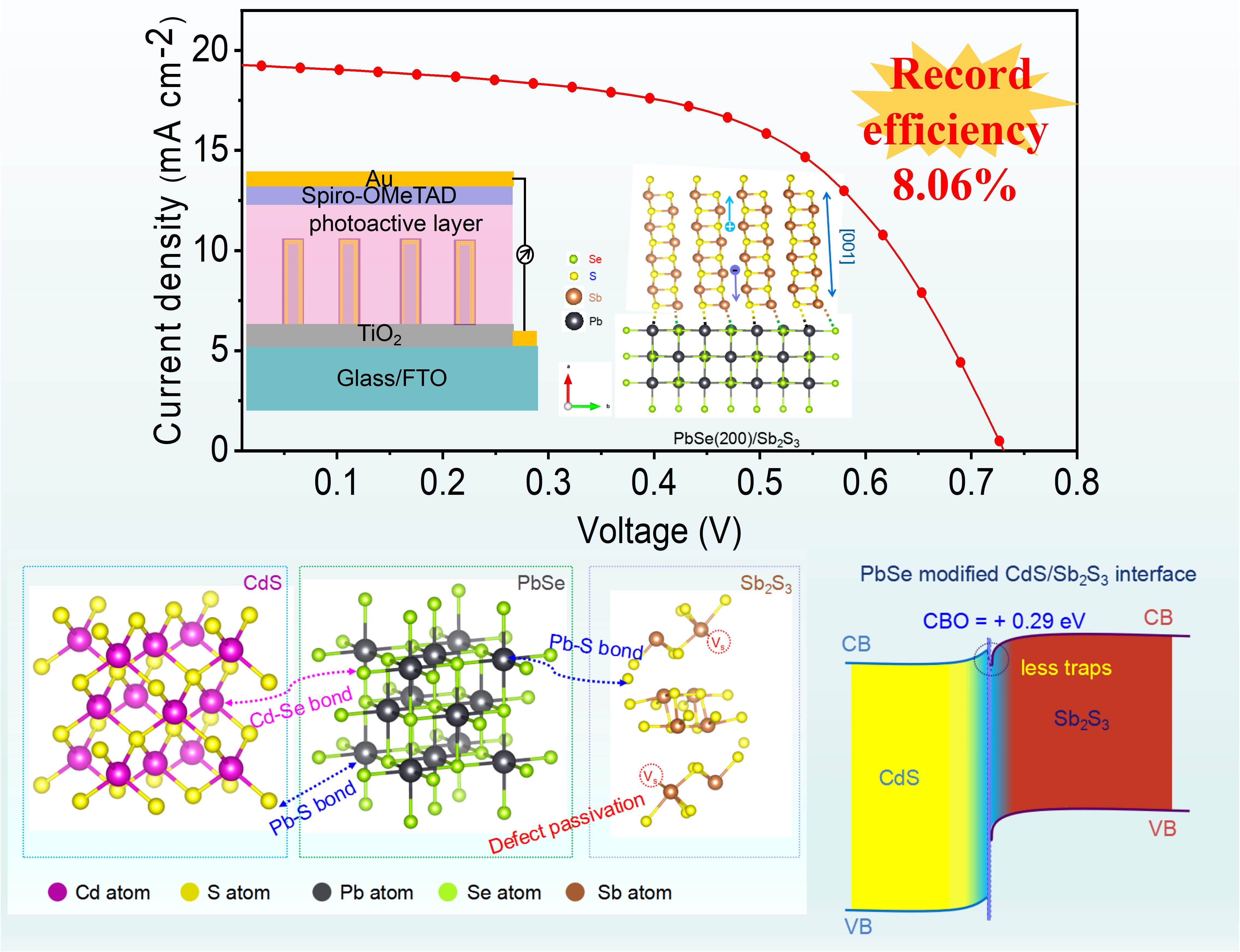
Recently, the research team led by Professor WANG Mingtai and Professor CHEN Chong from the Hefei Institutes of Physical Science of the Chinese Academy of Sciences, introduced a new strategy for enhancing the performance of Sb2S3 solar cells.
Their work, published in Advanced Functional Materials, achieved a record-breaking 8.06% power conversion efficiency for Sb2S3-based solar cells.
The main challenge for large-scale solar cell applications is the lack of cost-effective, high-efficiency, and stable systems. Although Sb2S3 solar cells are non-toxic and stable, their power conversion efficiency has stalled at 6%-7%. This limitation is due to difficulties in controlling crystal orientation during Sb2S3 growth, which affects charge transport efficiency.
To address this problem, the researchers proposed an innovative three-dimensional distributed interface hetero-induced crystallization strategy. By depositing PbSe nanoparticle films onto three-dimensional electron transport material (ETM) channels, they successfully induced [hk1]-oriented crystallization in Sb2S3 films. This strategy not only improved the crystallization process but also facilitated bidirectional passivation of the ETM/Sb2S3 interface defects and optimized the energy-band structure. As a result, the researchers achieved an impressive 8.06% power conversion efficiency in Sb2S3 bulk-heterojunction solar cells.
The study offers innovative insights into multiple domains including Sb2S3 device architecture design, crystallization kinetics modulation, surface/interface photoelectric performance engineering, and interfacial material selection.

Schematic diagrams of the Sb2S3 solar cell structure, photovoltaic performance, and its crystallization optimization, defect passivation, and energy-band adjustment. (Image by WANG Yang)